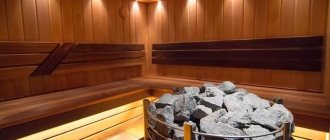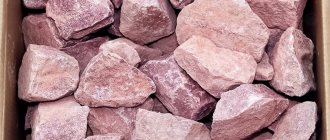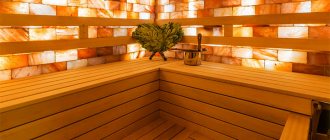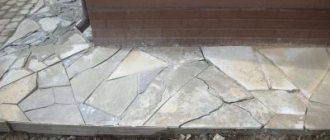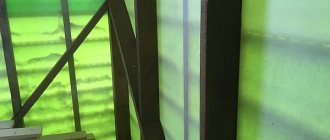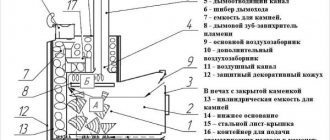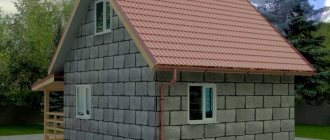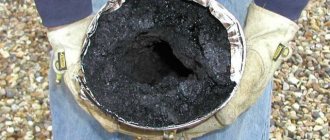Traditionally, natural stones are used in sauna stoves. They are valued for their ability to quickly accumulate heat and release it slowly. In general, minerals provide health benefits and play an essential role in the sauna atmosphere. The stones used in the steam room include sauna porphyry. It has been known to people for many centuries, since the times of Ancient Rome.
Geological certificate
To understand the specifics of using porphyrite in baths and saunas, you need to learn a little more about it.
In general, the composition of porphyrite corresponds to the description of average silica. Like jadeite, the mineral is formed from oxides of silicon, aluminum, magnesium, iron, and calcium. At the same time, the conditions of origin will be completely different. Silica usually forms in the deep layers of the earth for quite a long time, since cooling of magma without air is not a quick process. During this period, crystallization has time to complete.
The porphyrite structure is different. This mineral forms much closer to the surface of the earth. Under these conditions, cooling occurs faster, some crystals completely complete the cycle, others get stuck in the middle. In this case, the completed crystals will be located closer to the center, and the rest will cover them outside, like a capsule. The surface is obtained without an ordered texture and reduced density. As a result, overall hardness suffers.
Depending on the content of the magma, different types of porphyrites are born. The mineral component may be hornblende, pyroxene or plagioclase with a silica content of 45 to 65%.
It is important to distinguish pyroxene porphyrites and pyroxenes, porphyries from porphyrites:
- Pyroxene porphyrites include crystals of pyroxene, but are not entirely composed of it. The strength will be completely different.
- porphyry . Now the term is assigned to silicic acid rocks with potassium spar, and to porphyrites are specimens of the corresponding structure. Therefore, classifying, for example, crimson quartzite as porphyrites is fundamentally incorrect.
Where is porphyry used?
For thousands of years, porphyry has been used as a building, decorative and healing material:
- Altai stone was used in the construction of St. Petersburg. Palaces, park sculptures, and paved paths were built from it. The interior decoration consisted of large bowls and floor vases made by Russian craftsmen. They were admired by visitors to world exhibitions in Paris and other European capitals. Today they are the pride of the Hermitage collections.
- Presentable specimens are turned into cabochons for jewelry, boxes, candlesticks, and photo frames.
- Porphyry slabs become countertops, mantels, and stairs.
- The main highways of Europe are covered with Italian porphyry. The stone is rough and does not slip even when wet. This property is especially suitable for downhill roads.
A quartz-free type of stone – porphyrite – is a popular material for baths, steam rooms, and saunas.
Porphyry bowl
Why is porphyrite needed in a bathhouse?
For bathing purposes, the main selection criterion is not the composition of the shell, but the size of the crystals. The smaller they are, the denser the structure and the harder the stone. Such porphyrites distribute temperature fairly evenly, do not crumble for a long time and readily give off heat.
Characteristic colors are gray, pink, white, yellow shades.
Expert opinion
Lovkachev Boris Petrovich
Bath master who knows everything about steaming
A big plus is the reduced radioactivity of the mineral. When heated, it does not release harmful substances into the environment.
So, porphyrite intended for a bath has the following qualities:
- decent resistance to external physical influences;
- resistance to temperature fluctuations;
- fire resistance up to 1350C;
- repels water, sand and dust, easy cleaning.
Most often, stores come across supplies from Siberia, Kazakhstan, Bashkiria, Ukraine, the Caucasus and the Far East. Despite the affordable prices, the mineral is used even in luxury baths.
Place of Birth
Porphyrites are found in the Urals (Timofeevsky, Argayashsky), the Caucasus, Transcaucasia, Ukraine, Central Asia, Kazakhstan, Altai, Eastern Siberia and the Far East.
In the Chelyabinsk region, not far from the village of Novogorny, there is the Argayash porphyrite quarry, where more than a million tons of rock are mined per year. On the territory of the Republic of Bashkortostan, in the Beloretsk region, the Abzakovsky quarry of pyroxene-plagioclase porphyrites has been developed since 2011.
Category: Bath
Benefits and harms
The healing properties of stones always cause a lot of controversy among professional bathhouse attendants. Porphyrite occupies almost a leading position in the number of doubts.
Most steamers tend to believe that porphyrite cannot release any nutrients or aromas. At the same time, it does not emit toxic poisons into the air, which no longer makes the exposure harmful.
The main benefit comes from the effect of steam on the body. The stone is a kind of accumulator of thermal radiation. Other experts and hobbyists claim that the mineral, when heated, infuses a vapor of “vitamins.” In their opinion, in a volatile form, they quickly penetrate the body through the respiratory system and pores on the skin.
A sauna with porphyrite stone is extremely effective in the treatment of respiratory diseases: sinusitis, sinusitis, otitis. The steam created by porphyrite cleanses the skin, heals joints, and creates an atmosphere of mountain freshness in the steam room.
It is not possible to scientifically prove one or another point of view. Therefore, without specifying the reasons, the following effects from being in a bath with porphyrite are noted:
- relaxation of mind and body;
- easier breathing;
- stabilization of normal blood pressure;
- elimination of spasms;
- relief of pain, including headaches, joint and muscle pain;
- improved blood flow;
- increasing immunity.
Contraindications are common for visiting paired procedures: chronic diseases in the acute stage, viral infections, purulent formations, oncology, pathologies of the heart and brain.
Harm from using defective stones is also noted. Pathogenic microorganisms accumulate in cracks and holes, mold and fungi develop. In volatile form, such impurities become most dangerous. In addition, they may not withstand expansion and fly apart, injuring people with fragments.
Gabbro-diabase
Gabbro-diabase stone is similar to marble or granite
This volcanic rock is similar to marble or granite and is uniformly dark in color. It has high density, strength and low water absorption. When heated, gabbro-diabase expands evenly. In addition, these bath stones are mined in the most environmentally friendly corner of Russia - Karelia, and are inexpensive.
One of the disadvantages is that diabase takes a long time to heat up and cools down quickly. In addition, if these stones are heated strongly, they begin to emit a not strong, but specific odor.
The therapeutic effects of this breed have not been identified.
Application
Porphyrite is not incredibly beautiful like some other stones. It is not used for laying out decorative inserts, forming entire walls and floors, or for making furniture and interior items. This mineral is not relevant for tactile spa treatments: massages and spot heating.
Mainly, porphyrite has a purely practical value for creating good steam. They line furnace bodies and chimneys. Also, a scattering is made around the heating apparatus and placed directly into the firebox.
In different types of heaters, porphyrite behaves differently:
- closed - the stones do not come into contact with the fire, are placed in a container to isolate them from the flame, covered with a lid or closed with a damper. The heating temperature is about 400C, which implies sharp cooling with water. The steam is light. The service life of porphyrite is 2-3 years depending on the frequency of use.
- direct heating (flow-through) - the fire comes into contact with the stones, and after sufficient heating it is extinguished. Water is poured onto the hot stones. The steam is moist and light. Porphyrite lasts at best 1-1.5 years with moderate use. It is better to place a thick layer of stainless steel under the porphyry. Heating will be slower, but service life will be longer.
- in an open container - a container without a lid or door. The stones are still insulated from the flames. Porphyrite produces heavy steam, since the upper layer does not heat above 100C. In a sauna, such steam spreads more easily due to higher humidity. Service life – 2-4 years.
Wear of porphyrite can be identified by fine dust on the bottom of the heater. When destroyed, it begins to crumble like sand.
Kinds
The stone has a variety of shapes; it is found in nature in the form of domes, oblong needles, and there are also small sections. Rhyolite is rarely found in complex geometric shapes. This is a rare occurrence considering the way it is formed. It is not uncommon to find a mineral with a very large accumulation of ash around the rock or even within the rock itself.
Due to its specificity and formation, liparite is often called volcanic glass (because it contains a large accumulation of volcanic glass due to its origin). This property gives the stone hardness. The average density is achieved up to 5 points on the Mohs scale.
Some scientists draw conditional parallels between rhyolite and granite, since the first stone contains admixtures of other rocks, such as tuffs or volcanic agglomerates. Liparite and granite are often compared, but they have different compositions and different places of formation. The color palette of the rock is wide, the gradient starts from white and reaches pink tints (due to rose quartz). The most common color is sandy yellow with different undertones in the form of green splashes.
The composition of rhyolite impurities also contains the composition of certain natural metals, which gives greater density to the mineral. The stone has a shine and a glassy shell, which gives it smoothness and shimmer in the light. The peculiarities include the fact that rhyolite of any shape can withstand any temperature change, so it is famous for its durability.
Let us list the most common impurities that are found in rhyolite.
- Obsidian – gives the stone a browner tint.
- Pechstein is a volcanic glass, due to which the oily structure of the shine is obtained. Contains shades such as brown, black, green, yellow.
- Pumice. Due to it, porosity and unevenness, bubble inclusions are formed.
- Porphyry or porphyrite is a rock formed from magma. The peculiarity of this stone is that it does not contain potassium feldspar.
Criterias of choice
Porphyrites with a large amount of sulfides should not be used in baths. They can be identified by their abundant inclusions, reminiscent of dots of metal foil. When such specimens are heated and oxidized, sulfuric acid is released. A thick, suffocating vapor with an unpleasant odor is formed, and soreness and tingling occurs in the throat, eyes, and nasopharynx.
Responsible manufacturers do not put such minerals in packaging, but cases of unscrupulous practices are still common.
You should also pay attention to:
- behavior in water . If you immerse damaged porphyrite in a bowl of water, bubbles will appear around it and on the surface. The more bubbles, the more cavities in the stone.
- manufacturer's certificate and reviews . The presence of a certificate and a large number of good reviews for the brand increase the likelihood of a successful choice.
- sound . With internal cracks, the mineral sounds dull, while a “healthy” one sounds loud. A damaged stone can be identified by tapping the specimens against each other or using a hammer. In the oven, cracked units make a characteristic clicking sound.
Unfortunately, there are many complaints about Karelian stones that they often end up with sulfur impurities.
Speaking of sizes, it is logical to take stones in the range of 5-12 cm. In small kilns, a medium size is placed. In large heaters, fractions alternate layer by layer from bottom to top from the largest to the smallest.
Which is better: diked or crushed stones?
Usually stones for a bath are either chipped or piled. And the difference between them is not only in appearance.
Breaking rock into small pieces is basic processing. Therefore, split stones are cheaper, but they have irregular shapes and sharp edges, which makes them difficult to place in the heater. On the other hand, due to the same irregular shape, crushed stones produce more steam, since their surface area is larger.
Boned stones undergo processing, due to which they become smooth and rounded. Such stones look more beautiful, they are easy to place in the oven, and due to their rounded shape they are well ventilated. In addition, during processing, the “weak” parts of the stones with fragile inclusions are cut off, so they last longer than chipped stones.
FAQ
Why is porphyrite placed under semi-precious rocks, since it is more fragile?
Porphyrite in this combination is used as a consumable material. The substrate made from it is cheaper and easier to replace than an expensive stone.
How much porphyrite do you need?
The quantity is calculated according to the recommendations from the instructions for a specific oven. At least 50% filling. You need to take with reserve, taking into account the rejection of individual stones during disassembly.
Which porphyrite is better: diked or chipped?
Regarding porphyrite, it is better to prefer crushed. Its edges are sharper, so there are gaps in the masonry for air and water. This will allow the rock to warm up more efficiently and not overheat to the point of destruction. Expansion due to temperature will occur more evenly.
Do I need to treat stones before putting them in the kiln?
Simply wash in salt or soapy water and dry thoroughly.
Porphyrite is a decent inexpensive stone for creating high-quality steam. With the right mineral, going to a bath or sauna will become a pleasant event without major costs.
Physical and mechanical characteristics
The dominant component of the rock is potassium feldspar. The main varieties are quartz and quartz-free porphyry. The color and exact formula are determined by the mineral impurities in the stone.
The main physical and mechanical properties of porphyry are wear resistance, resistance to aggressive environments, and temperature changes. Stone products retain their original condition for centuries in any climate.
Porphyry is an excellent thermal insulator, invaluable for cold regions.
Soapstone chlorite
When heated, soapstone emits soft, comfortable warmth
This rock has a denser and more durable structure than diabase. Externally, soapstone bath stones are discreet, but interesting and have a variety of shades of gray.
The rock has good heat capacity and resistance to chemically aggressive environments.
The most important advantage of the stone is that it heats up extremely quickly. It accumulates 2.5 times more heat than a stove brick and releases it evenly and for a long time. This means that soapstone generates “light” steam.
Among the beneficial properties of the rock, it can be noted that when heated, it emits soft and comfortable heat, in the infrared spectrum, similar to the sun. It increases our immunity and normalizes metabolism.
When choosing which stones are suitable for a bathhouse, keep in mind that soapstone may generate dust. You will get rid of this drawback if you rinse and heat the stones before the first bath procedure.
White quartz, also called "hot ice"
White quartz is very useful: it saturates the room with ozone
Quartz stone is ideal for baths. It is a translucent white mineral. It is absolutely environmentally friendly.
“Hot Ice” is highly valued for its spectacular appearance and medicinal qualities. Like jadeite, sea bath stones and crimson quartzite, this rock is quite expensive.
Useful properties of white quartz:
Quartz has a unique healing quality: when heated and then sharply cooled by sprinkling with water, it begins to release atomic oxygen, which saturates the room with ozone. This gas enriches the blood of steaming people with oxygen, and also activates brain function and improves well-being.
In addition, as a result of mechanical deformations, which are caused by sudden temperature changes, the “hot ice” crystals begin to emit electromagnetic vibrations. This phenomenon is called the “piezoelectric effect”. These waves, interacting with human electromagnetic fields, correct and restore the body's energy system.
The duration of use of this stone depends on its intensity. It is especially undesirable to expose “hot ice” to very high temperatures typical of a sauna - it will simply burst. It must be regularly sorted out, removing already cracked specimens.
For the bravest
If you are primarily concerned not with how to choose stones for a bath, but where to get them, and at all costs want to find them yourself, your choice is moraine. This is a rock that was formed as a result of the retreat of glaciers. Such stone is common everywhere where glacier tongues have been, and such territories exist nearby: in the Moscow region, near Kyiv, in the vicinity of St. Petersburg.
It is better to collect stones in the field, and not in water; such stones are already hardened by nature itself and are able to withstand temperature well. Choose rounder options that are somewhat smoothed out. They will last longer and will crack and disintegrate less. From time to time, check the masonry for cracked and damaged stones; it is better to remove them in time so that the sauna retains its excellent properties and has a light, pleasant steam.
By the way, when collecting stones yourself, make sure that they do not contain any harmful impurities. Otherwise they will do more harm than good.
When choosing stones, remember about the appearance of the room, because a sauna is intended not only for benefits, but also for quality rest and relaxation, so everything in the room should be harmonious and beautiful. For greater comfort, stones can be used not only for masonry, but also in the interior of other rooms, for example, in finishing a swimming pool, dressing room, etc.
If you are at a loss in choosing stones, or not sure which type to choose, contact a professional. They will advise you, help you choose the right stone, determine the required size and quantity of building materials. In addition, professional advice will help you achieve maximum effect and benefit from staying in the steam room.
Raspberry quartzite
This rock consists of 98% quartz. A valuable and quite rare mineral with a noble purple color. It has high density and low water absorption; in addition, it has the highest hardness, strength and wear resistance. Crimson quartzite stone is extremely resistant to cracking if it is heated and then cooled.
Crimson quartzite has a noble purple color
This breed is durable and strong, resistant to chemical influences. When used regularly in a sauna stove, it retains its structure and shape, and does not emit toxic impurities when heated.
When you put stones in a sauna stove, keep in mind that individual pieces may crumble. This can be explained by the impact of mechanical processing using the splitting method. As a result, it is necessary to carefully sort the stones before use.
Useful properties of quartz:
The healing properties of quartz have been known for a long time. It treats diseases of the chest as well as the respiratory tract. In addition, when choosing which stones to choose for a bath, take into account that quartzite stabilizes blood pressure and can improve blood circulation.
